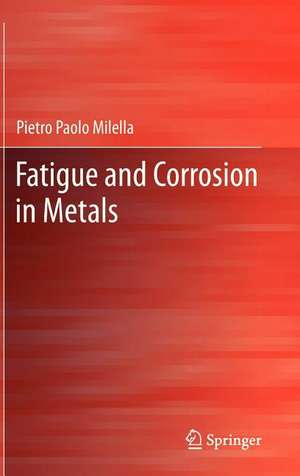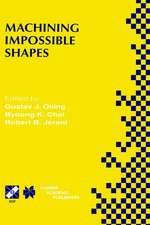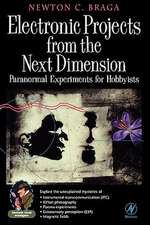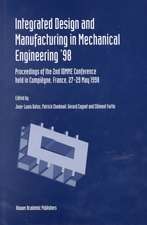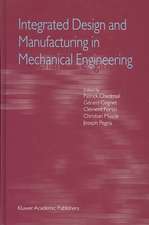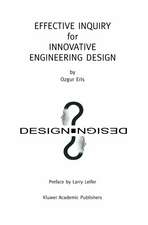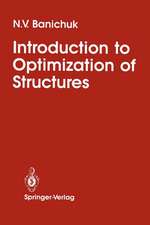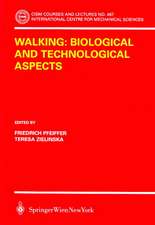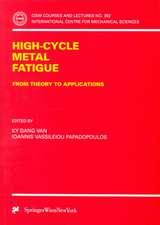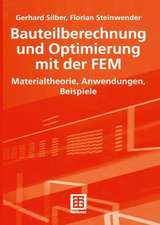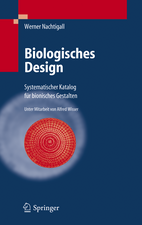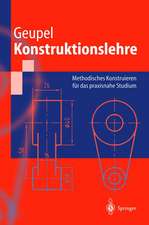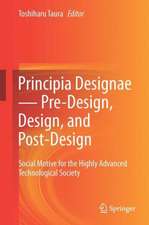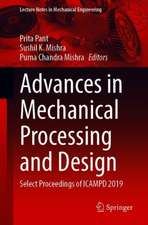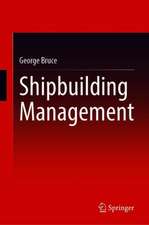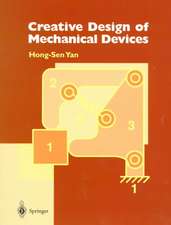Fatigue and Corrosion in Metals
Autor Pietro Paolo Milellaen Limba Engleză Hardback – 5 oct 2012
| Toate formatele și edițiile | Preț | Express |
|---|---|---|
| Hardback (2) | 805.93 lei 39-44 zile | |
| Springer – 5 oct 2012 | 805.93 lei 39-44 zile | |
| Springer International Publishing – 20 mar 2024 | 983.34 lei 6-8 săpt. |
Preț: 805.93 lei
Preț vechi: 1046.66 lei
-23% Nou
Puncte Express: 1209
Preț estimativ în valută:
154.22€ • 162.17$ • 127.43£
154.22€ • 162.17$ • 127.43£
Carte tipărită la comandă
Livrare economică 14-19 aprilie
Preluare comenzi: 021 569.72.76
Specificații
ISBN-13: 9788847023352
ISBN-10: 8847023351
Pagini: 866
Ilustrații: XX, 844 p. 763 illus.
Dimensiuni: 155 x 235 x 40 mm
Greutate: 1.77 kg
Ediția:2013
Editura: Springer
Colecția Springer
Locul publicării:Milano, Italy
ISBN-10: 8847023351
Pagini: 866
Ilustrații: XX, 844 p. 763 illus.
Dimensiuni: 155 x 235 x 40 mm
Greutate: 1.77 kg
Ediția:2013
Editura: Springer
Colecția Springer
Locul publicării:Milano, Italy
Public țintă
Upper undergraduateCuprins
Introduction.- Nature and phenomenology of fatigue.- Morphological aspects of fatigue crack formation and growth.- Factors that affect S-N fatigue curves.- Data scatter and statistical considerations.- Stress-based fatigue analysis. High cycle fatigue.- Strain-based fatigue analysis. Low cycle fatigue.- Notch effect.- Cumulative damage. Cycle counting and Life prediction. Fourier analysis. Impact fatigue. - Fracture Mechanics approach to fatigue crack propagation.- Crack tip plastic zone effect on fatigue crack propagation.- Fatigue in welded structures.- Corrosion.- Hydrogen embrittlement and sensitization cracking.- Fracture mechanics approach to stress corrosion.- Corrosion fatigue.- Linear Elastic Fracture Mechanics. Compendium of Stress Intensity Factors Solutions.
Textul de pe ultima copertă
This textbook, suitable for students, researchers and engineers, gathers the experience of more than 20 years of teaching fracture mechanics, fatigue and corrosion to professional engineers and running experimental tests and verifications to solve practical problems in engineering applications. As such, it is a comprehensive blend of fundamental knowledge and technical tools to address the issues of fatigue and corrosion. The book initiates with a systematic description of fatigue from a phenomenological point of view, since the early signs of submicroscopic damage in few surface grains and continues describing, step by step, how these precursors develop to become mechanically small cracks and, eventually, macrocracks whose growth is governed by fracture mechanics. But fracture mechanics is also introduced to analyze stress corrosion and corrosion assisted fatigue in a rather advanced fashion. The author dedicates a particular attention to corrosion starting with an electrochemicaltreatment that mechanical engineers with a rather limited knowledge of electrochemistry will well digest without any pain. The electrochemical introduction is considered an essential requirement to the full understanding of corrosion that is essentially an electrochemical process. All stress corrosion aspects are treated, from the generalized film rupture-anodic dissolution process that is the base of any corrosion mechanism to the aggression occurring in either mechanically or thermally sensitized alloys up to the universe of hydrogen embrittlement, which is described in all its possible modes of appearance. Multiaxial fatigue and out-of-phase loading conditions are treated in a rather comprehensive manner together with damage progression and accumulation that are not linear processes. Load spectra are analyzed also in the frequency domain using the Fourier transform in a rather elegant fashion full of applications that are generally not considered at all in fatigue textbooks, yet they deserve a special place and attention. The issue of fatigue cannot be treated without a probabilistic approach unless the designer accepts the shame of one-out-of-two pieces failure. The reader is fully introduced to the most promising and advanced analytical tools that do not require a normal or lognormal distribution of the experimental data, which is the most common case in fatigue. But the probabilistic approach is also used to introduce the fundamental issue of process volume that is the base of any engineering application of fatigue, from the probability of failure to the notch effect, from the metallurgical variability and size effect to the load type effect. Fractography plays a fundamental role in the post mortem analysis of fatigue and corrosion failures since it can unveil the mystery encrypted in any failure.
Caracteristici
Fatigue is treated from conventional (stress/strain-life) and fracture mechanics point of view (the bases of fracture mechanics are very well illustrated) Stress corrosion and corrosion-fatigue are treated both from electrochemical (very understandable by mechanical engineers) and fracture mechanics stand point in a manner useful for design The reader goes hand by hand troughout the book as in a novel All subject matters are treated also from a phenomenological point of view, which helps understanding There are many examples (generally each chapter has its exercises) Includes supplementary material: sn.pub/extras
Notă biografică
Pietro Paolo Milella belongs to the first generation of Italian nuclear engineers. He was the director of the Analysis and Mechanical Technologies Division at ENEA/DISP, the National Italian Nuclear Authority where he was also responsible for all the Italian Nuclear Safety Research Programs in the mechanical field. He developed the Italian Design Criteria for the next generation of Nuclear Power Plants in Italy. In the ‘80s, he became adjoined professor of Machine Design at the University of Cassino, Italy. In 1995, he became adjoined General Director of the National Agency for Environmental Protection, ANPA. He wrote the books: “Meccanica della Frattura” (in Italian) and “Fatigue and Corrosion in Metals”. He is celebrating 55 years of professional activity.
